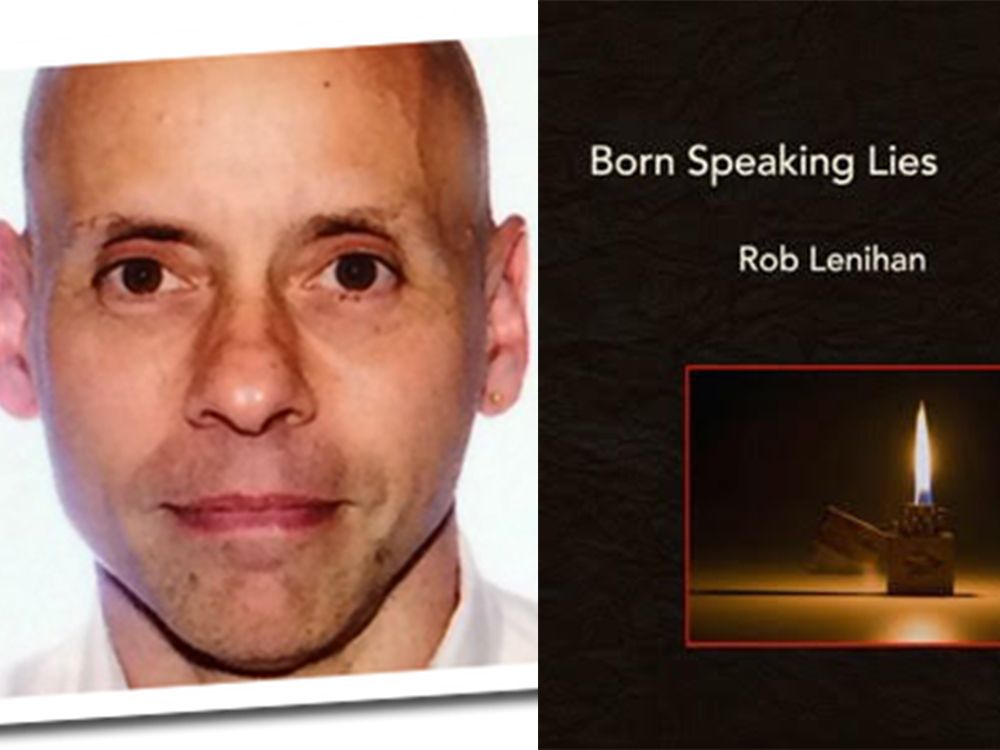Bay Ridge Author Talks Gentrification, Crime Reporting, And His Fascination With The Mob


Earlier this year born and bred Bay Ridge resident Rob Lenihan published his debut crime novel, set in the 1990s, Born Speaking Lies. Late last month, we published his Brooklyn mobster quiz on the site.
We got a chance to speak with him recently about neighborhood bookstores past — “The Novel Idea was one of the bookshops that’s no longer with us. Books and their stores are vanishing,” he told us over the phone — what it was like being a crime reporter in Stroudsburg, Pennsylvania from 1988 to 1994 — “To this day, when I hear a fire engine, I run off. I gotta’ know what’s going on” — and his feelings on Saturday Night Fever — “I hated it when I saw it back in the old Alpine Theater, and then three years ago I saw it at Sundance and I kind of liked it.”
Today, Lenihan is back living in Bay Ridge. He now works as a business writer in New York. His novel is partially inspired by his experiences reporting crime in both PA and Waterbury, Connecticut.
“If you take Sunset Park and Bay Ridge, you get Waterbury,” Lenihan said of the small city, “that’s how I’d describe it to a Brooklynite.”
His experience in PA was quite different: “They weren’t too fond of New Yorkers back then, even though it looked like the sixth borough of NYC. People can commute every day on the bus now. Or they drive. God bless ‘em.”
Before his experience in CT and PA, Lenihan cut his teeth at the Brooklyn Home Reporter and The Spectator. “It was a Friday paper,” Lenihan told us of the Spectator, “The Home Reporter company owned it.”
Below, some more of our findings from chatting with Lenihan:
What are your favorite mobster movies, books, etc.?
I’m fond of the oldies: The Asphalt Jungle, of course there’s The Godfather, The Sopranos, of course On the Waterfront is arguably a mob movie — that’s arguably Brando’s best, his most breakout role. They shot that in Hoboken. If you walk around up there you’ll recognize parts of it.
What is the fascination with organized crime?
I don’t like crime when it happens to me, but organized crime has this whole subculture, and I think that’s what we’re fascinated with. Hitting little old ladies in the head for their lunch money is horrible, but organized crime has a whole culture to it — rituals and forbidden oaths, and nicknames.
Part of the inspiration for this novel came from this story I did for the Pocono Record about gangsters who have homes in the Poconos. John Gotti, a gangster from the 1980s, had a home in the Poconos. I spoke to a woman who was a federal prosecutor who put away an Asian mobster from the Pocono area.
Tell me one of your favorite stories from growing up in Bay Ridge.
Golly, I guess when I became a reporter at The Home Reporter and I got to walk a beat with an officer from the 72nd Precinct in Sunset Park on the foot patrol and we just walked around and he showed me some of the drug activity from back when Sunset Park was a bad place.
How do you feel about the way Brooklyn is changing?
I think when you’re younger you have a contempt for what’s familiar, but then you look around at the rest of the world and the rest of the city and see that Bay Ridge is a really great place to live, and it’s still reasonably affordable. Bay ridge was always like a village to me, and if you go back to its history it really was one once.
I went to Brooklyn Tech in Fort Greene in the 70s, and back then at 3 o’clock in Fort Greene, you ran like hell for the subway station and prayed you made it.
Now there’s all these funky restaurants and the issue of gentrification, people being driven out of long time residences. Even Park Slope at one time was a pretty funky area.
I do think it’s changed for the most part for the better, but that’s only my two cents. You go back to Saturday Night Fever, every other character wants to get out of Brooklyn. And now everyone is coming to my side of the river. I remember people sneering when they heard I was from Brooklyn
I think Brooklyn has lost some of the old time neighborhood people, but neighborhoods change. As much as you think you can accept that, when your neighborhood changes around you, you don’t like it that much. You like to think that you’re progressive but you kind of miss the old days too.
Your blog, the Luna Park Gazette — I’m assuming the title was inspired by Coney Island?
Yes. My mother, god rest her soul, was at Luna Park the night it burned down. It had been abandoned, it was all wooden, and there was a tremendous fire and she was there to see it. It really was this fantasy place, you can see in the photos. It was sometime in the 1940s.
My aunt had a friend who he was retired but at one time in the his life he was a reporter for the Brooklyn Eagle and he covered that fire that my mom saw.
Rob will be reading at Bay Ridge’s BookMark Shoppe on Sunday November 20th at 3 p.m.




